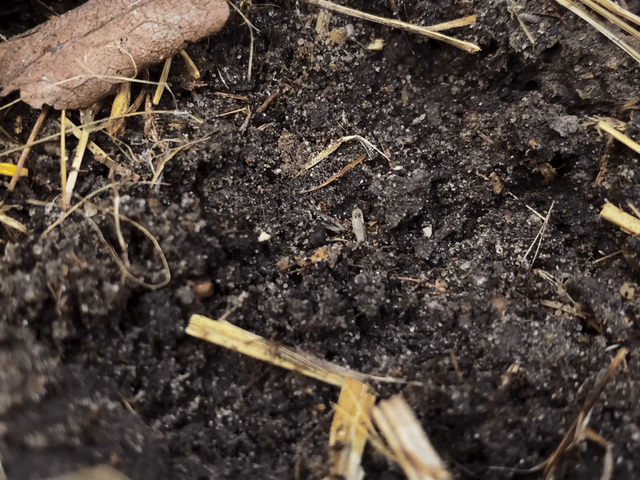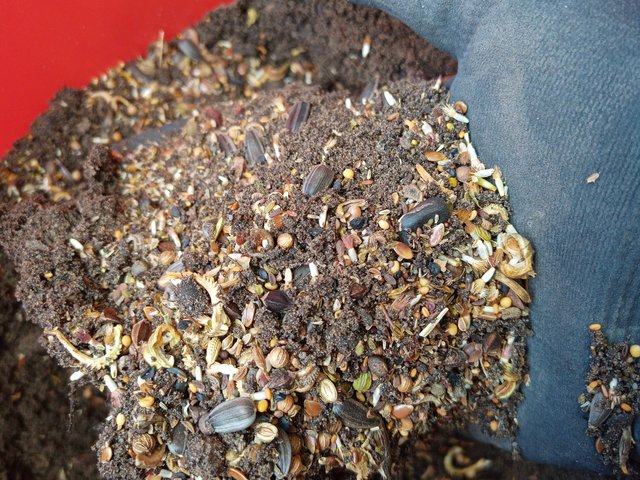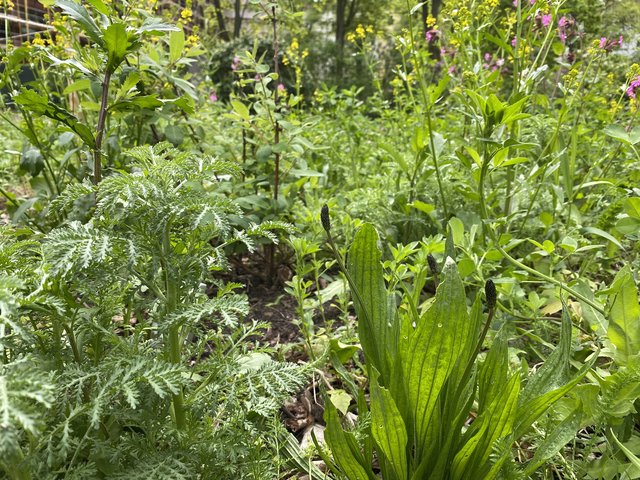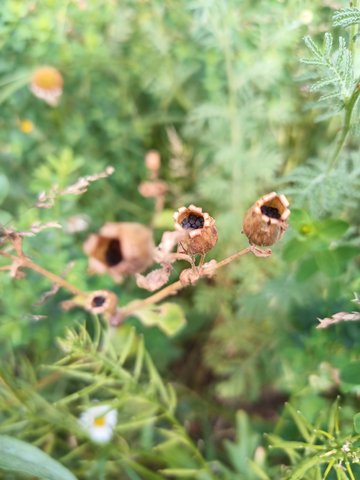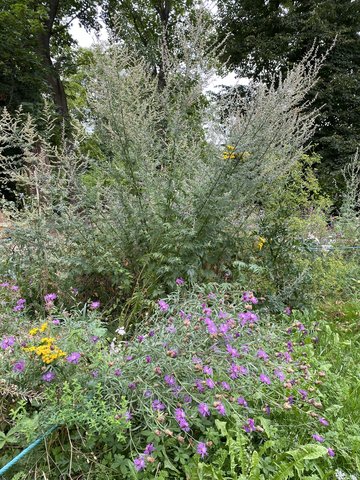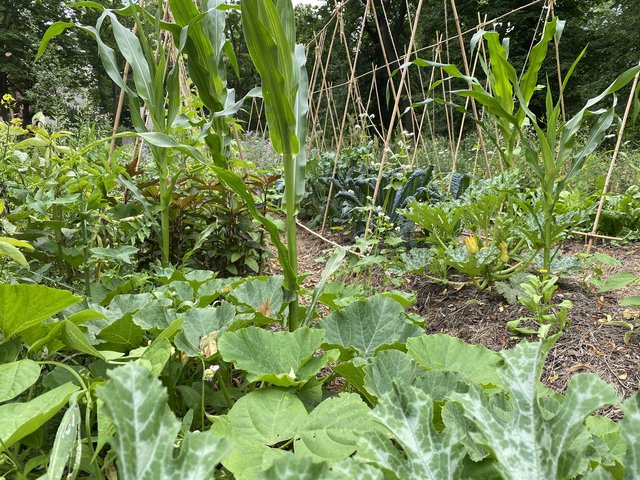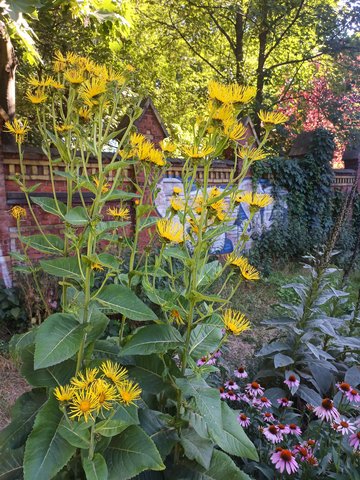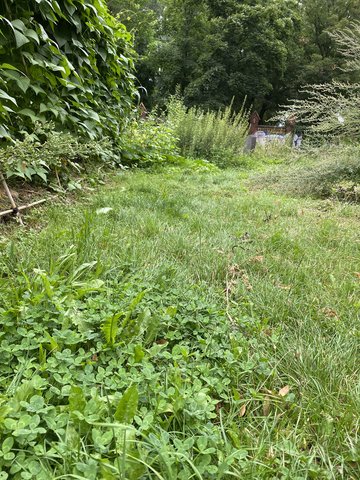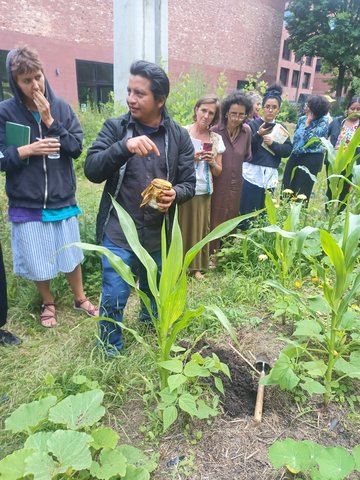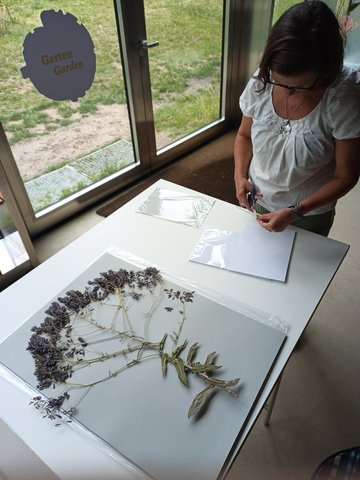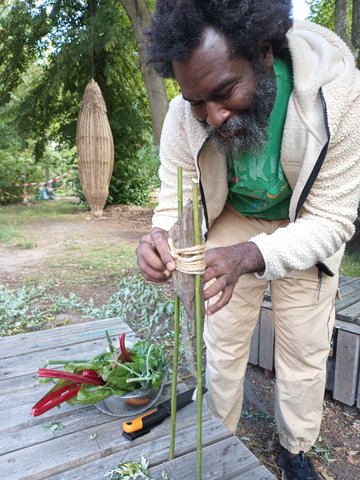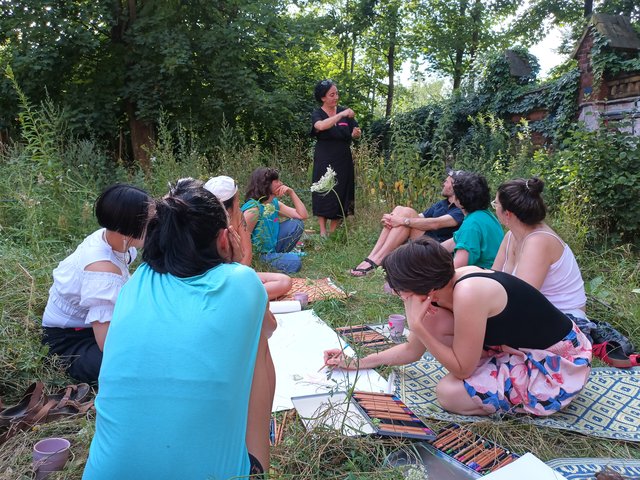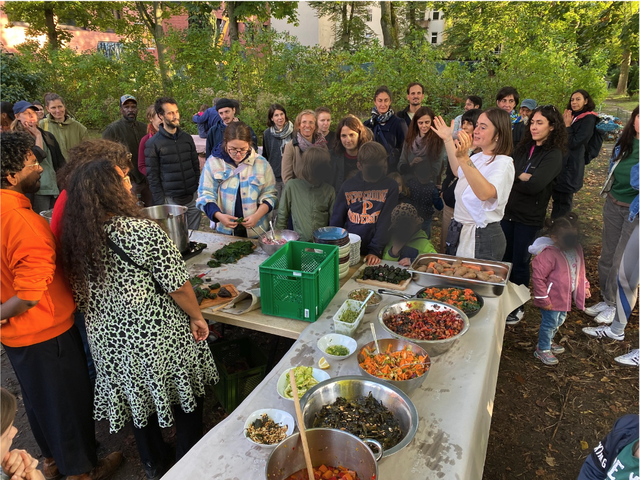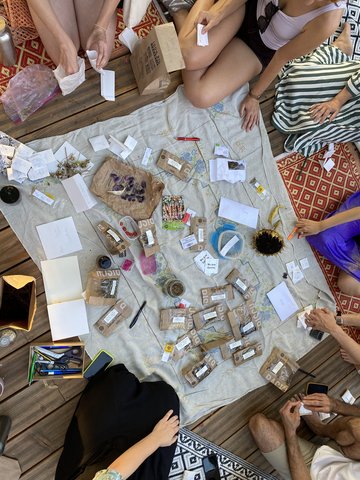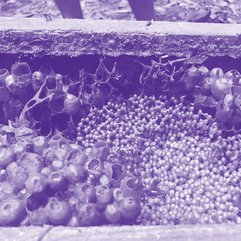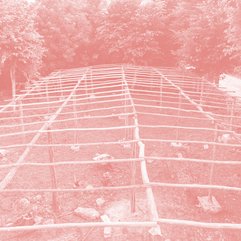Regenerative Garden at Spore Initiative
Regenerative gardening is a restorative practice, which supports nature's ability to change, evolve and become more resilient over time. A regenerative garden constantly changes and becomes more complex as time progresses. The garden of the Spore Initiative is an example of this—it’s a place where nature changes with the seasons and the plant community evolves every year through ecological succession. A feedback loop between soil and plant communities is at the heart of this process. As time passes, the garden changes in appearance, but the collective work of plants helps the soil biological community grow in complexity and move towards greater resilience.
Around sixty species of herbaceous plants grow in the meadow of the garden, along with thirty-five medicinal plants. Among these, young fruit trees and shrubs are maturing to become the backbone of a small forest-garden ecosystem in the future. Vegetable varieties are cultivated in raised beds. Within the Spore program workshops and educational events make use of these different types of gardening practices, the diversity of plants, and the ecosystem slowly unfolding.
Ecological Disturbances: A Starting Point
In the summer of 2022, this area was still part of a large construction site, starkly contrasting with the surrounding cemetery's vegetation. The topsoil of the garden plot had been removed or dispersed, and the subsoil compacted by machinery. Consequently, the diversity of the existing plant community diminished, and the soil ecology became altered and simplified.

 Starting point
Starting point
Ecologists would call such an event of "resetting" the ecosystem to a previous successional state or an altered state an ecological disturbance. Natural ecological disturbances, such as low-intensity fires, spring floods, or mountain landslides, are important elements of natural landscapes. When a portion of the ecosystem is regressed to an earlier stage, this event generates open edges and diverse habitats, thereby enhancing biological diversity at the landscape level.
The garden at Spore begins from a disturbance, emerges from a non-equilibrium, from a fragile, grotesque and intense state of the open soil bearing many possibilities.

 Soil food chain
Soil food chainSoil
Nature often opts for complexity among numerous possibilities, fostering many relationships where there were previously few. The garden at Spore follows a similar principle, aiming to build resilience by embracing complexity and chance.
The words "repair" and "regeneration" bring along with them a sense of agency, which is too often attributed to the power of humans or technology to save what they have destroyed in the first place. However, when ecological repair and regeneration occur, they are primarily facilitated by the efforts of plants and bacteria. Like a green band-aid, they stretch across the open soil, striving to create favourable living conditions for themselves. The “repair” is a byproduct of plant and bacterial life, whose joint effort results in bringing life to the soil.
How does the diversity of plant species, dense root, and above-ground biomass contribute to the creation of living soil? It is hard for plants to acquire all the necessary nutrients from the mineral component of the soil. However, they can foster bacterial cultures by releasing carbon-rich exudates into the soil, thereby inviting, feeding, and supporting them. Bacterias, by subsisting on the sugars provided by the plant roots make the soil nutrients evaluable to the plants through a process called chelation.
As a result of symbiosis, bacteria multiply and create biofilms that act as glue, connecting all the dispersed soil particles into tiny clumps. Mushrooms, another potential symbiotic partner of plants, also play a role. The mycelia of mushrooms extend for many kilometers through the soil, binding the soil crumbles already held by bacteria into even larger aggregates.
The interplay between plants and bacteria initiates the process of soil development. As bacteria multiply, other organisms such as predatory unicellular protozoa and nematodes also emerge. Consequently, the complexity of soil ecology increases, and pathways for the circulation of nutrients begin to form.
What does good soil look like? It looks alive. You should be able to see the larger inhabitants of the soil ecosystem with a magnifying glass or even with the naked eye. Biological life is what distinguishes soil from mineral substrate.

 Promoting insect life
Promoting insect life
Growing soil takes time, and the surest way to do it is to support an abundance of plant species and respect the annual cycle of birth and death, allowing dead plants to return to the soil while keeping plant roots intact so that the relationship with bacteria can flourish. Once soil is teeming with life, it attains stability (glued and bound together by bacteria and mushrooms) and it develops a porous structure (drilled and aerated by larger inhabitants). Similar to a sponge, this soil can store humidity in its pores and provide oxygen to all its inhabitants. Such soil is resistant to weathering, enabling it to store accumulated carbon.
Supporting life in farmland soils helps make nutrients available to plants, thereby reducing farmers' dependency on chemical inputs. A complex and balanced soil ecosystem also decreases the risk of soil-borne diseases, as pathogenic organisms must compete with beneficial plant organisms. Industrial agriculture heavily relies on hydrocarbons in its energy budget, i.e. for producing nitrogen fertilizer in an energy hungry chemical process or diesel to power large agricultural machines. In contrast this regenerative agriculture relies on solar energy to grow living soil through permanent plant cover.
A vegetable growing in living soil is busy producing so-called secondary metabolites—complex organic molecules—that it uses for communication with its environment, attracting beneficial bacteria or repelling insects. These secondary metabolites in plants are largely responsible for aroma, taste, and medicinal properties. Access to healthy food depends on the existence of healthy soils.

 Functional structure of the garden
Functional structure of the gardenFunctional Structure
The garden space is divided into four areas.
The largest area is dedicated to the regenerative meadow. Effects of soil compaction are alleviated by introducing a diverse plant community. While slowly restoring life to the soil, this area also serves as a food source for wild solitary bees, wasps, butterflies and moths. Most of the plants can be used for medicinal purposes or have historical significance in trades and industries. Over the next five years, this area will be transformed into a forest-edge ecosystem by introducing shrubs, bushes, small fruit trees, and perennial vegetables. As the shrubs mature they will also provide food and shelter for the small species of birds.
The second area is the vegetable garden, grown on raised rows. The soil of the rows is amended with compost and mulched with grass clippings from the surrounding meadow.
The third area is the medicinal herbs garden bed, featuring a selection of species suitable for use as first aid medicine. Altogether the garden provides around thirty medicinal plants.
The fourth zone is the green meadow in front of the Spore building, which provides fresh grass for making hot compost and mulching the vegetable rows.
Ecological Succession and Forest Gardens
If you have ever observed an abandoned plot of land somewhere on a roadside or adjacent to a construction site, it is easy to notice that over time, grass patches give way to woody plants and shrubs. This gradual change in the composition of the plant community is called ecological succession. Succession and disturbances complement each other: succession moves the plant community towards a woodland, while disturbance sets the clock back to annual grassy communities.
When we look at agricultural landscapes in the context of ecological succession, we can see how farmers’ practices function as ecological disturbances: cutting and charring wood to establish a forest field, flooding a field to harness the fertility of minerals dissolved in water, plowing the field and exposing soil for seeding grains, and coppicing deciduous trees for making charcoal. Many of the world’s traditional agricultural landscapes are complex and patchy mosaics of environments, each emerging as a result of a specific land-use practice.

 Ecosystem succession
Ecosystem succession
 Initial condition of the soil
Initial condition of the soil
Forest gardens represent a hybrid form of agriculture. Predecessors of this contemporary concept can be found in the Milpas of Yucatan, Palenques and Quilombos of the Caribbean and Brazil, swidden fields of the Japanese Yakihata, Kerala’s home gardens, and other places around the world where people and landscapes still retain knowledge of polycropping and subsistence farming.
Some of these agricultural knowledgescapes are based on the cycles of succession and disturbance, sometimes spanning over 30 years. All of them combine annual crops (such as maize, sorghum or buckwheat), trees, and shrubs bearing edible or otherwise useful fruits. In comparison to a flat crop field, plants in these gardens grow on multiple levels and capture more of the sun's energy, converting it into food for humans and soil bacterial communities.
The dynamics of ecological succession animates the regenerative part of the garden. In the first season vegetative season the open soil was sawn with a mixture of seeds containing a large number of agricultural and wild species. The agricultural species such as mustard, buckwheat or facelia readily germinate in the open soil and shelter it from desiccation and uv-radiation. Underneath the protective cover seeds of the biennial and perennial plants safely germinate and take the place of short-living predecessors in the next season. A throw of a dice and a chance factor play a big role determining which fluid state of balance will reveal itself in a visual composition of the garden in each vegetation cycle.

 Plant community of the first year
Plant community of the first year
Conventional garden designs emphasize ordered space, clear geometry of the paths and delineated group plantings. For being part of a certain culture and tradition, the “orderliness” in a garden is rather anything but normal as it requires constant intervention, supervision and control. In contrast, garden at Spore Initiative embraces emerging patterns of botanic diversity, providing a space to learn from the “chaos”.

 Plant community of the second year
Plant community of the second year

 Plant community of the third year
Plant community of the third year
As the garden matures the variation of annual plants will get reduced and a more stable set of species will dominate the area. As this process of “stabilization” progresses the little fruit trees and edible shrubs will have time to establish and benefit from the regenerative effect on the soil from the annual plants. Perennial vegetables will also be gradually introduced into the garden. In the result a small forest garden will be created, resembling a natural forest edge ecosystem with its patches of sunny and shadowy, open and closed areas.
Water Preservation and Adaptation for Arid Conditions

 Soil life
Soil life
Life in the soil gives it physical structure which is both consolidating and porous, not unlike a sponge. And like a sponge soil rich in organic content can absorb and retain rainwater, making it longer available for the plants. On the surfaces denuded of vegetation water either accumulates and then rapidly evaporates bringing salts from the deeper soil layers to the surfaces or runs off the surfaces carrying nutrients and smaller silt particles away. In contrast to that, rainwater that has felt into a soil covered with vegetation, on the one hand is gradually released by the plants as a vapour through transpiration (it cools the ambient) and the rest of it can continue its path downwards through the porous medium and recharge groundwater on which we all depend during the periods of drought.
Another way to save water in the agricultural or gardening context is to promote use of forgeable plants. Such plants are typically robust enough to grow with a little assistance from humans. Alternatively their edible state coincides with early spring - making them a rain irrigated crop.
In the garden we experimentally introduced a some wild edible plants from the mountainous mediterranean regions, such as calepina, see beet, wild chicory, milk thistle, mellow and wild rocket; perennials such as rhubarb, cardoon, artichoke, hablitzia and wild asparagus; spring vegetables such as winter cress and silene, besides the autochthonous ground ivy, dandelions, ramsons, dead-nettles, ground elder and other typical foraging plants.
Garden as a Knowledgescape
In human history, there have been perhaps no single plant, which would have no use or meaning attached to it. As a repository of plant species, the garden is a large reference book for people's knowledge and techniques, both traditional and scientific. By identifying and bringing these knowledges to our attention we can build a dialogue with the participants around the questions of seeds, food, medicine, water, community and collective learning.
Spore Garden is a node in the seed preservation initiative “Critical Seeds Library” which connects different seed saving realities by providing information about the challenging history of some plant varieties and preserving the seeds of varieties whose traits can be useful in adapting food systems to the effects of climate change.
Throughout the season the garden is a space for collaborations with the Spore’s guests and long term partners. Exchanges that happen here take advantage of multiple, ecological, biological and cultural realities intersecting within the garden space.
Credit Photography: Mikhail Lylov



